The CSA Forest
By Evan Hammon and The Ecology Committee
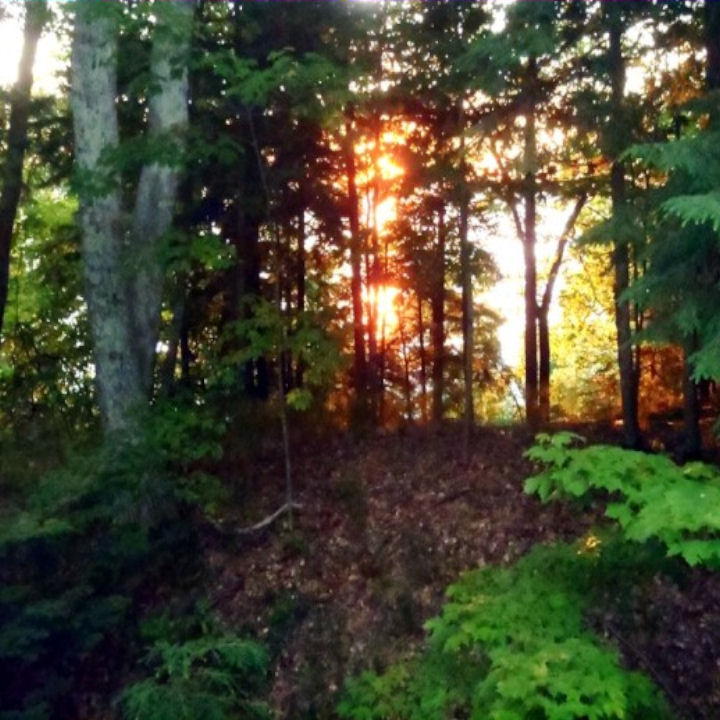 Within the one-mile stretch of the Congregational Summer Assembly between Lake Michigan and Crystal Lake exists some of the oldest living trees in Benzie County. These trees have created a variety of micro-ecosystems, making the Assembly grounds a rare find in the state of Michigan. The CSA forest consists mostly of sugar maple and beech trees. It is evident that some of the hilly areas were left untouched when logging crews came through in the early 1900s. Whatever areas were logged have experienced a hearty comeback. The forest, however, is aging, and while it is doing a good job of growing the next generation, climate change, diseases and pests, deer, invasive plants, tree fall, erosion and development are affecting this unique habitat. Maintaining a healthy understory will ensure that when the old giants do meet their end, others in the understory will be there to take their places. The CSA grounds are a matrix of private and common properties. The majority of CSA land is divided into small privately owned lots. Management of the entirety is a communal effort. Our collective goal as a community is to make sure we are preparing for the future threats by securing a stable landscape. Let’s love our forest, and it will love us back!
Within the one-mile stretch of the Congregational Summer Assembly between Lake Michigan and Crystal Lake exists some of the oldest living trees in Benzie County. These trees have created a variety of micro-ecosystems, making the Assembly grounds a rare find in the state of Michigan. The CSA forest consists mostly of sugar maple and beech trees. It is evident that some of the hilly areas were left untouched when logging crews came through in the early 1900s. Whatever areas were logged have experienced a hearty comeback. The forest, however, is aging, and while it is doing a good job of growing the next generation, climate change, diseases and pests, deer, invasive plants, tree fall, erosion and development are affecting this unique habitat. Maintaining a healthy understory will ensure that when the old giants do meet their end, others in the understory will be there to take their places. The CSA grounds are a matrix of private and common properties. The majority of CSA land is divided into small privately owned lots. Management of the entirety is a communal effort. Our collective goal as a community is to make sure we are preparing for the future threats by securing a stable landscape. Let’s love our forest, and it will love us back!
Threats to the CSA Forest and Best Practices to Help Mitigate These Threats
Additional information can be found by clicking on the blue links below
Climate Change
Our region is experiencing, and will continue to experience, climate change. The US Forest Service Research Station has published a report describing the effects of changing weather on our region of Michigan. We can expect: higher average seasonal temperatures; more frequent and intense storms; strong wind events; irregular precipitation patterns; less frozen time during winter; changing soil moisture patterns; and tree regeneration complexities. These changes will have a collective unknown impact on our forests, but the best way to avoid irreversible damage, is to diversify the ecological composition of the woodlands. The threat of climate change stresses plants and wildlife. Stress conditions lead to weakened trees, difficulty for seedlings to reach maturity, lack of food available for animals, and diseases and non-native pests establishing with greater ease.
Best Practices: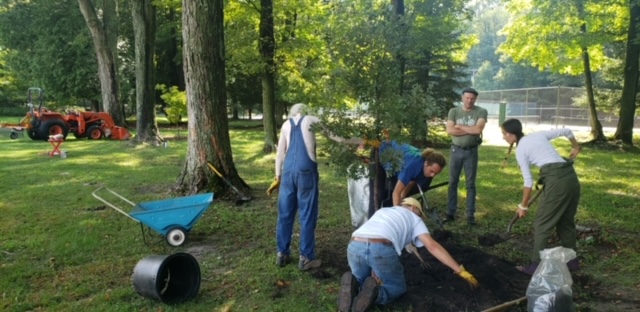
- Protect open soil from erosion by taking care of the understory.
- To fill open gaps in the forest, consider native trees that adapt well to warmer temperatures and are resistant to disease.
- See the following videos:2021 CSA FOREST RESTORATION PROJECT and THE ASSISTED TREE RANGE EXPANSION PROJECT (ATREP) AT THE CONGREGATIONAL SUMMER ASSEMBLY
Diseases and Pests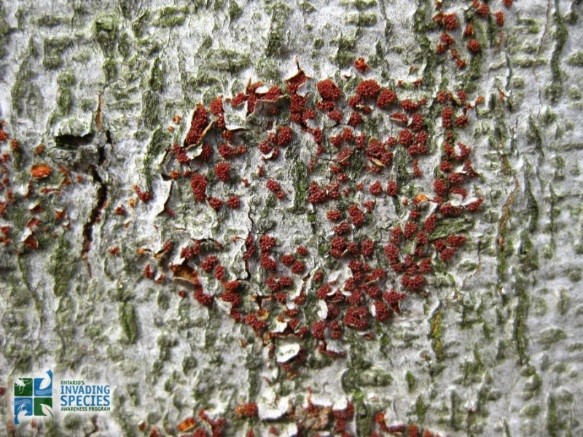
Forest ecosystems in Northwest Lower Michigan have sustained high levels of tree damage and mortality due to the Emerald Ash Borer, Beech Bark Disease, and Oak Wilt. Hemlock Woolly Adelgid has been steady moving up the western coast of Michigan. To date, no cases have been detected at the CSA. Asian-Long Horned Beetle outbreaks border Michigan in Ohio and Illinois. Emerald Ash Borer has already killed over 10% of our forest. Beech Bark Disease has the potential to kill our beeches, which make up 35% of the canopy. Fortunately, the CSA has invested in treating two prominent ashes east of the Meeting House, as well as 54 beeches throughout the woods. Because of the beech’s large canopy, treating them on private property will help maintain a healthy understory, keep nut stocks high, regulate temperatures, and maintain beneficial soil conditions.
Best Practices:
- Evaluate, treat, and/or remove diseased trees. To contact a licensed professional to evaluate and treat trees, refer to the Arborists, Foresters, Invasive Species, Landscapers/Nurseries Resources list.
- Diversify with tree species that are unaffected by disease and pests so they can mature and propagate.
Deer Browsing
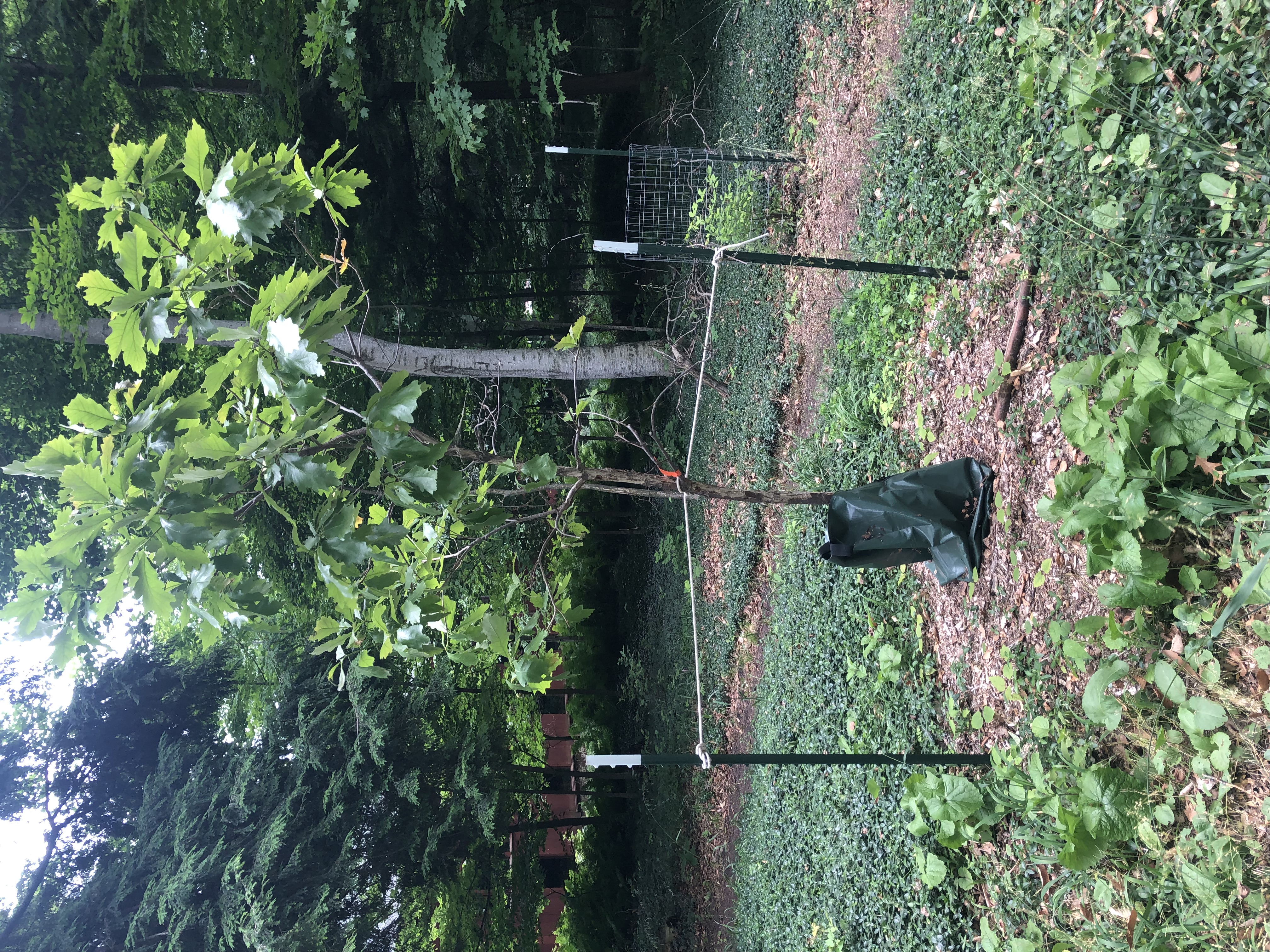 A major problem in our forest is deer. Deer have no real predators to limit their population. They browse on almost every plant – wildflowers, shrubs, and tree saplings. Deer-browse reduces plant success and diversity, destroying habitat for insects, birds, and small mammals. It stops tree sapling production and success. When a big tree falls, saplings should be waiting to jump in to fill the space once occupied by the old tree canopy. Unfortunately, the CSA forest has little new growth ready to become the next generation. Instead invasives, such as garlic mustard have established themselves.
A major problem in our forest is deer. Deer have no real predators to limit their population. They browse on almost every plant – wildflowers, shrubs, and tree saplings. Deer-browse reduces plant success and diversity, destroying habitat for insects, birds, and small mammals. It stops tree sapling production and success. When a big tree falls, saplings should be waiting to jump in to fill the space once occupied by the old tree canopy. Unfortunately, the CSA forest has little new growth ready to become the next generation. Instead invasives, such as garlic mustard have established themselves.
Best Practices:
- Add netting or fencing around newly planted trees to discourage deer.
Invasive Plants
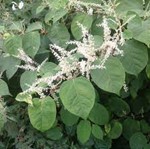 Within the CSA, several plots have transformed into invasive species playgrounds. These spaces are overgrown with garlic mustard, nettle, mullen, wood bluegrass, burdock, among other species that have managed to flourish. The decline of these areas is the result of both human activity and natural processes. Humans have cleared stands of trees and their understory, and these areas were not planted or monitored. Nature has provided these tracts with an abundance of sunlight, stimulating seeds that were dormant deep in the soil. The open area creates reduced competition among plant species. The hearty, invasive plants grow quickly, robbing the soil of necessary nutrients for other plants. Mature plants produce huge quantities of seeds that spread to surrounding forests.
Within the CSA, several plots have transformed into invasive species playgrounds. These spaces are overgrown with garlic mustard, nettle, mullen, wood bluegrass, burdock, among other species that have managed to flourish. The decline of these areas is the result of both human activity and natural processes. Humans have cleared stands of trees and their understory, and these areas were not planted or monitored. Nature has provided these tracts with an abundance of sunlight, stimulating seeds that were dormant deep in the soil. The open area creates reduced competition among plant species. The hearty, invasive plants grow quickly, robbing the soil of necessary nutrients for other plants. Mature plants produce huge quantities of seeds that spread to surrounding forests.
Best Practices:
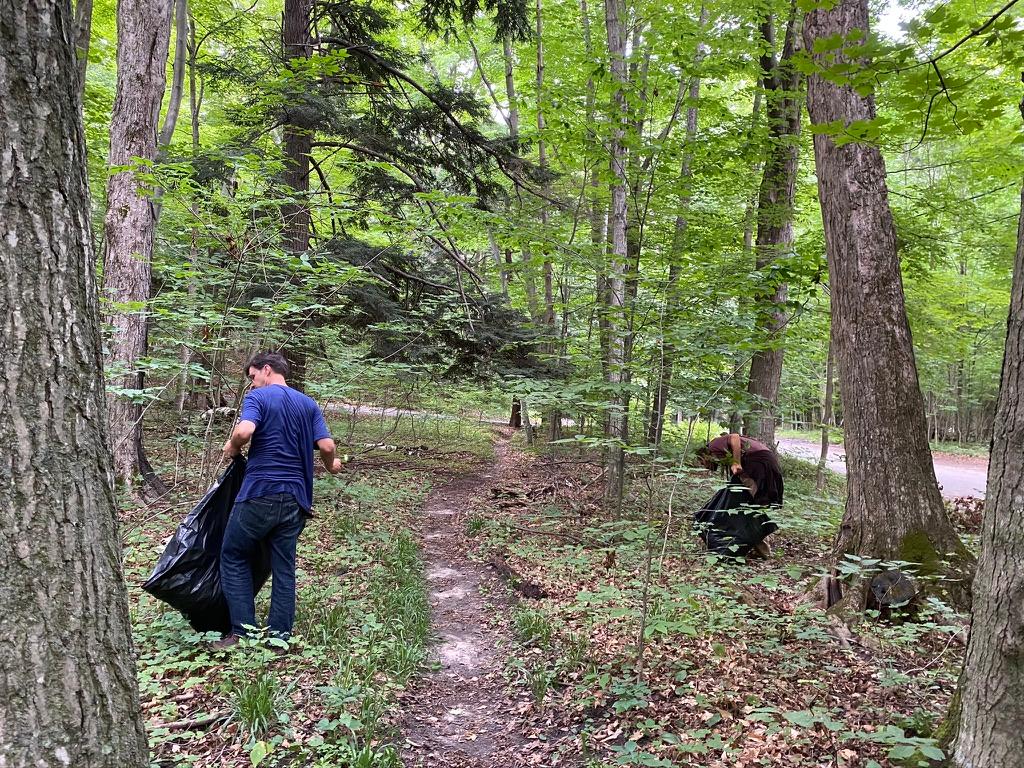
- Remove invasive species in the spring/early summer months when the plants are still growing and have yet to reach seed production. Many invasive plants, such as baby’s breath, garlic mustard, and myrtle can be removed without licensing. Others, such as Poa nemoralis (Wood bluegrass) and Japanese knotweed, require professional removal. For more information, see Northwest Michigan Invasive Species Network (ISN), and TOP 12 INVASIVE SPECIES
- Monitor the source of soil brought in for construction projects so that invasive plants are not introduced into the ecosystem.
Tree Fall
When an area has had a recent tree fall or planned removal of trees, a large opening the above canopy is created. This occurrence can create problems – dry soil that stresses existing plants. If the ground below is depleted of seeds and plants, it is a recipe for the disastrous impact wrought by invasive plants.
Best Practices:
- Remove trees carefully in the winter, protecting other trees and the ground from heavy equipment. During this time trees are dormant, making them unlikely to develop fungus or disease. It is also much easier to see the entirety of the tree to make the most precise cuts.
- When a tree falls, observe the change in the canopy and the impact on the understory. Consider letting the tree lie to provide nutrients and habitat for wildlife. Remove invasive plants.
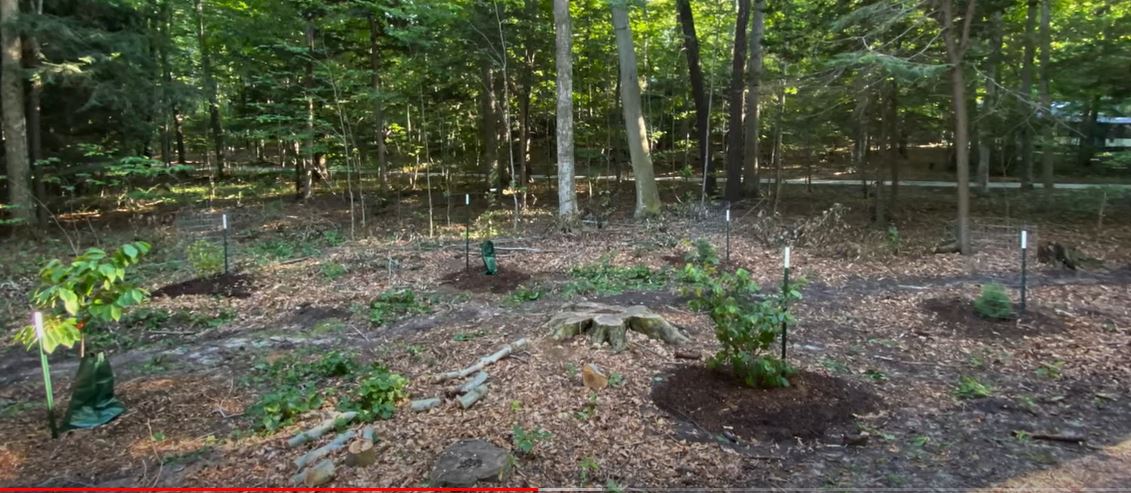 Plant new native seedlings or mature trees or shrubs. Create watering schedules, and monitor the area for new unwanted growth that may advance quickly.
Plant new native seedlings or mature trees or shrubs. Create watering schedules, and monitor the area for new unwanted growth that may advance quickly. - For more information about how the new trees and shrubs were planted, visit the demonstration plots that have been planted on CSA common grounds. These plots serve as guides for the community to visualize what might be possible.
Erosion and Development
Nutritious soil is important to the wellbeing of plants, wildlife, and buildings. In the CSA forest, a thin layer of topsoil rests upon a sand dune. As weather-related storms come through with increased intensity, they wash away exposed soil. When new roads, septic systems, cottages, or parking spots are added, the soil’s stability is directly altered. Preventing erosion provides support for plants and wildlife, as well as infrastructure.
Best Practices:
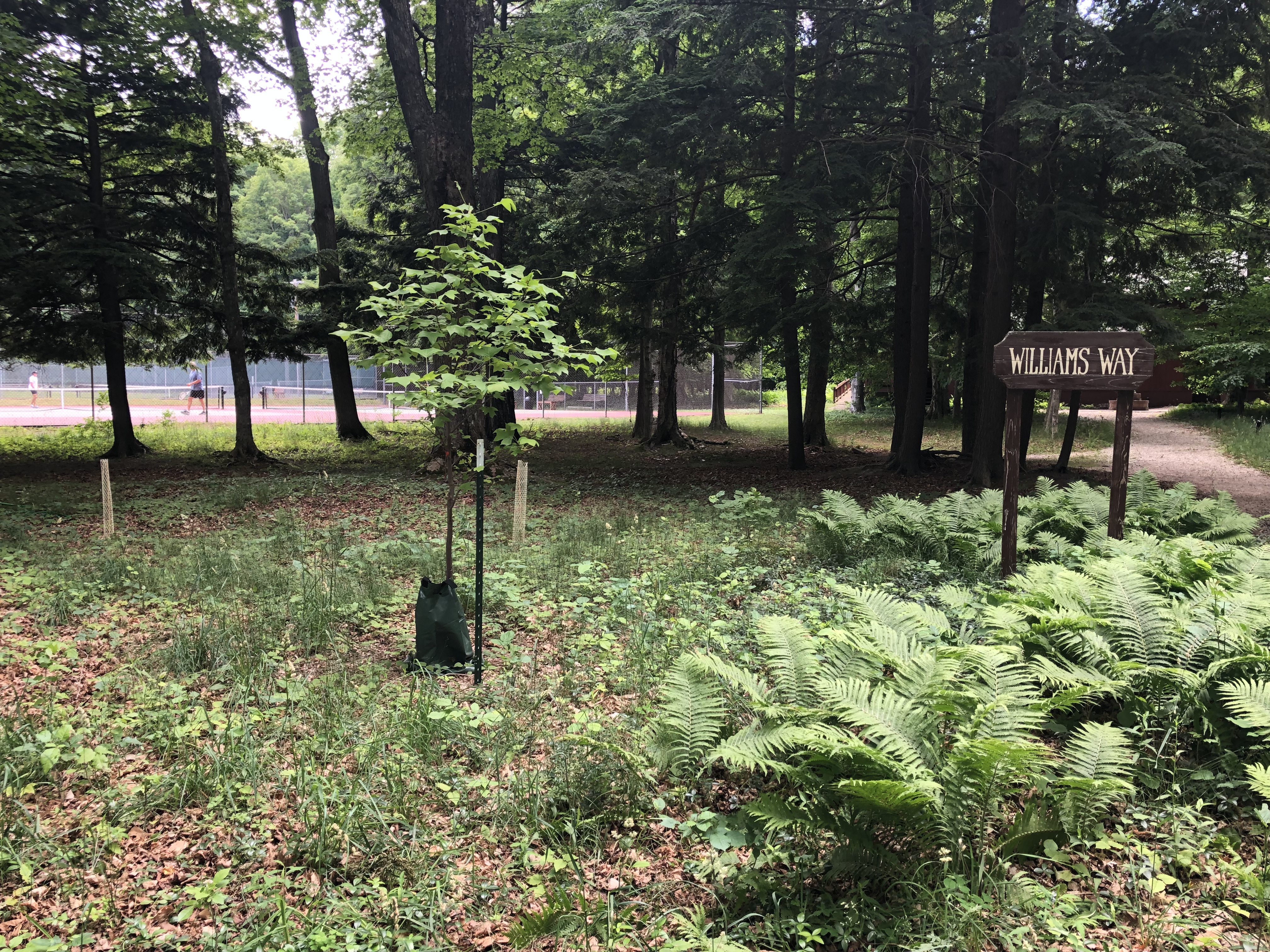 Attend any open soil by planting native plants. See: deciduous-trees; evergreens; shrubs, and under-story-trees
Attend any open soil by planting native plants. See: deciduous-trees; evergreens; shrubs, and under-story-trees- Protect the vegetation from vehicle parking and vegetation.
- Cover existing parking spots with a layer of organic material, such as wood chips or mulch that will act as a stabilizer and protect the soil.
- Hire professionals to help manage a large-scale project. A list of recommended area professionals can be found here: Arborists, Foresters, Invasive Species, Landscapers/Nurseries Resources list.
ADDITIONAL INFORMATION:
Click here to read about the 2021 Forest Restoration Strategic Project.


